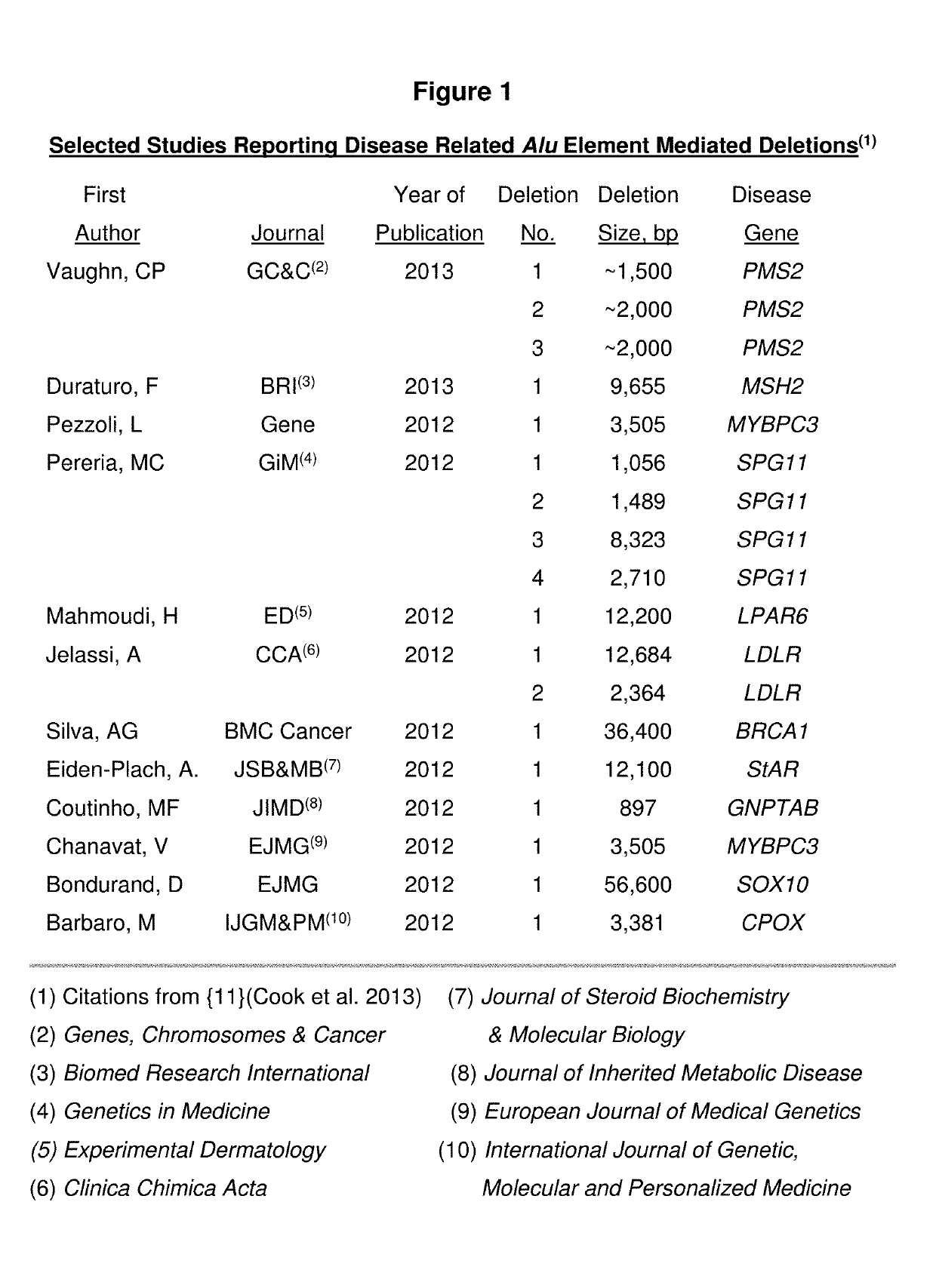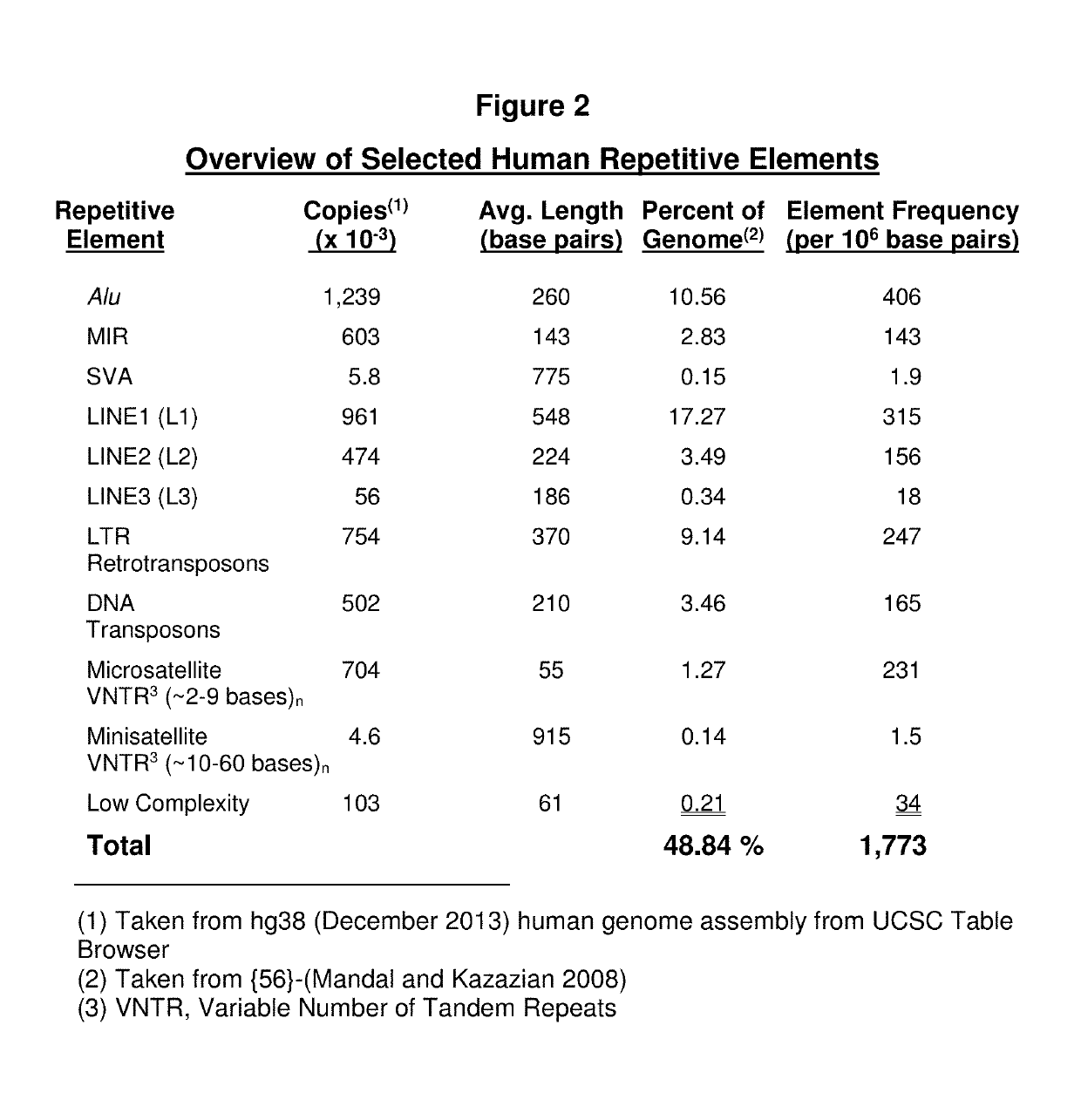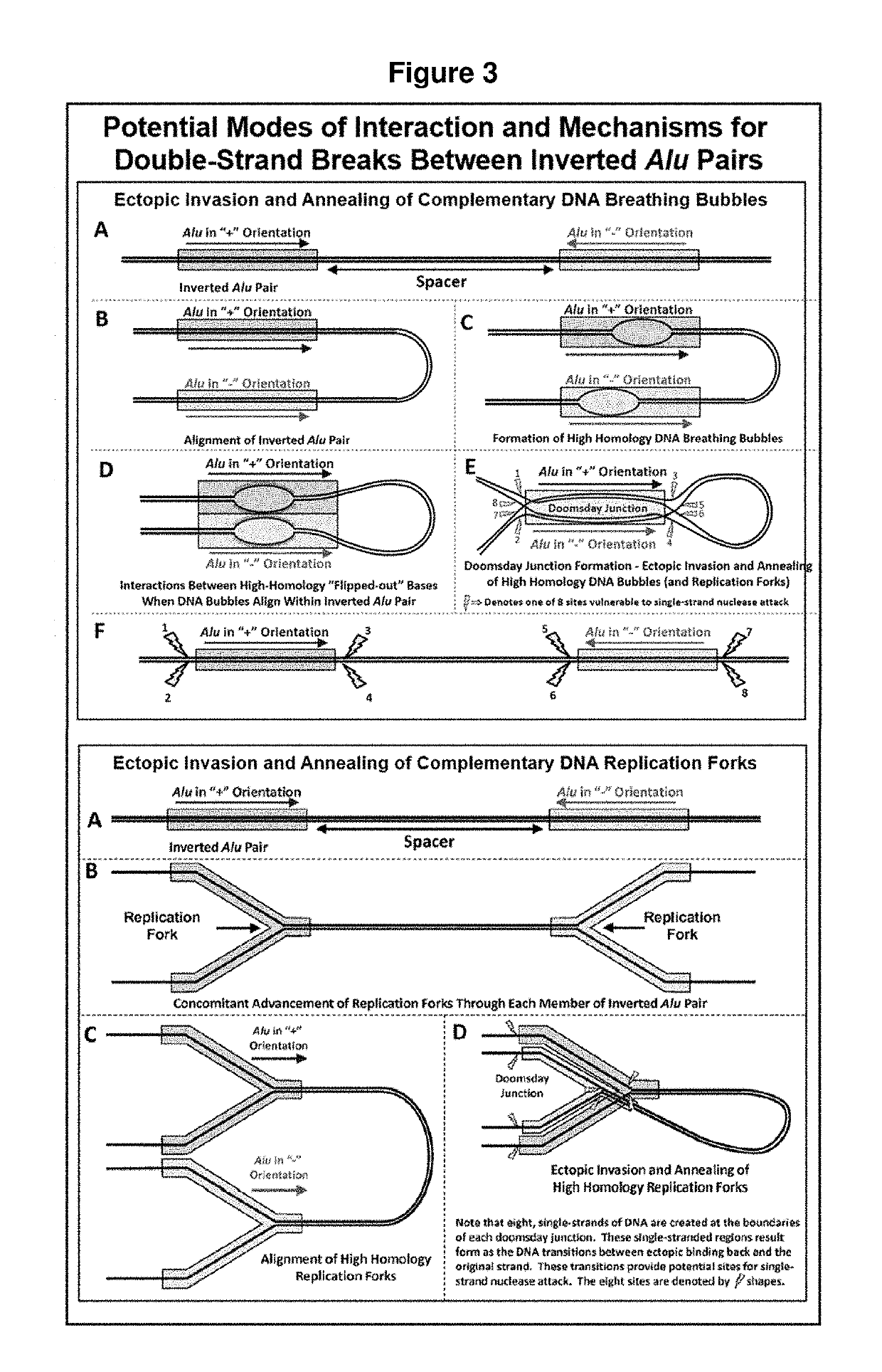Clinical use of an Alu element based bioinformatics methodology for the detection and treatment of cancer
- Summary
- Abstract
- Description
- Claims
- Application Information
AI Technical Summary
Benefits of technology
Problems solved by technology
Method used
Image
Examples
example 1
A Simplified Estimate of the Stability of One Repetitive Element (L2 Element) that Resides within the Repetitive Element Landscape Described in FIG. 7
[0102]Table 1 lists the three algorithms that describe the lowest Alu-Alu pair I:D ratios for non-clustered Alu pairs. These lowest I:D ratios are described by the dashed line on the right-hand side of FIG. 9. Since the curves (surface) in this figure are symmetrical, these three algorithms also can be used to describe the lowest I:D ratios on the left side of the surface. Example 1 is not intended to be limiting as to how the Alu-Alu pair I:D versus spacer size curves can be utilized to provide more accurate estimates of the I:D ratios for various repetitive element pairs, but is intended to be exemplary of this invention.
[0103]
TABLE 1Alu-Alu Pair I:D Estimates for Repetitive DNA Element I:D EstimatesSpacer Size RangeAlgorithms for Determining Equivalent (Base Pairs)I:D in non-Clustered Alu Elements 0-10,000 I:D = 0.9535 + (0.000000...
example 2
A Simplified Estimate of the Composite Stability of the L2 Element Examined in Example 1
[0113]This patent application claims that two homologous, inverted repetitive elements can interact when separated by 500,000 base pairs or less. Within this spacer size limit, an inverted pair interaction can occur with any other homologous element that is located either 5′ or 3′ (upstream or downstream) of an element. The final estimated stability of a given repetitive element is derived from the product of the square root of all the estimated I:D ratios for each inverted pair that is formed. The estimated stability of a repetitive element is therefore described by the following equation. This equation is adapted from patent application Ser. No. 14 / 154,303.
[0114]EstimatedStabilityofaRepetitiveElement=∏SpacerSize=-500,000bp(5′)SpacerSize=500,000bp(3′)l:DofInvertedPairs
[0115]Repetitive element landscapes, as defined in this patent application, typically contain tens...
examples 1 and 2
reflect Example 1 of patent application Ser. No. 14 / 154,303.
PUM
| Property | Measurement | Unit |
|---|---|---|
| Structure | aaaaa | aaaaa |
Abstract
Description
Claims
Application Information
 Login to View More
Login to View More - R&D
- Intellectual Property
- Life Sciences
- Materials
- Tech Scout
- Unparalleled Data Quality
- Higher Quality Content
- 60% Fewer Hallucinations
Browse by: Latest US Patents, China's latest patents, Technical Efficacy Thesaurus, Application Domain, Technology Topic, Popular Technical Reports.
© 2025 PatSnap. All rights reserved.Legal|Privacy policy|Modern Slavery Act Transparency Statement|Sitemap|About US| Contact US: help@patsnap.com



